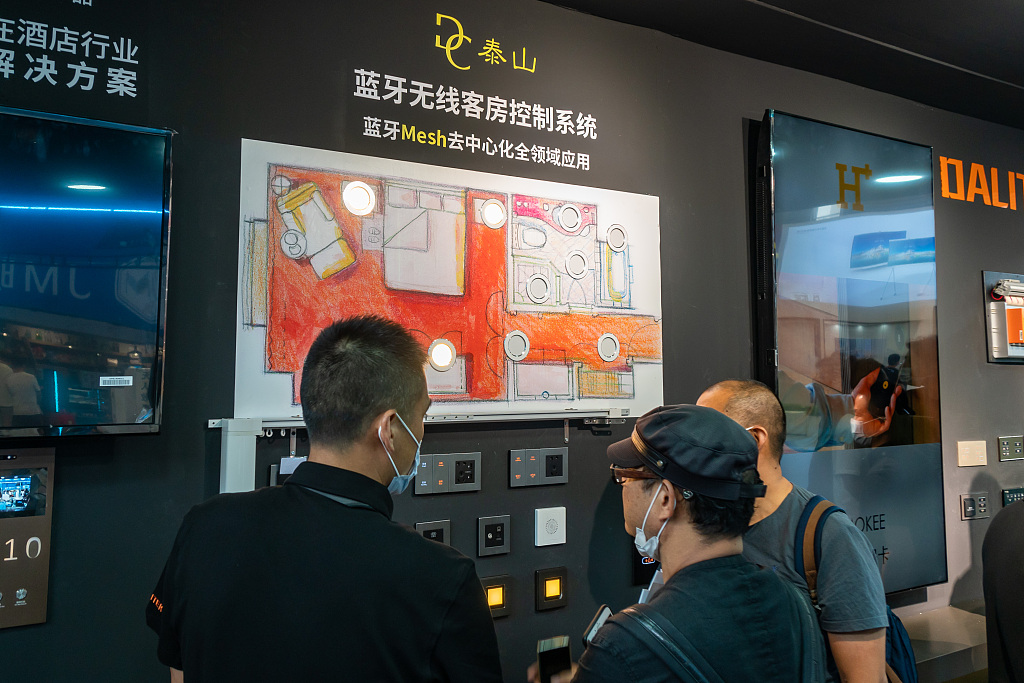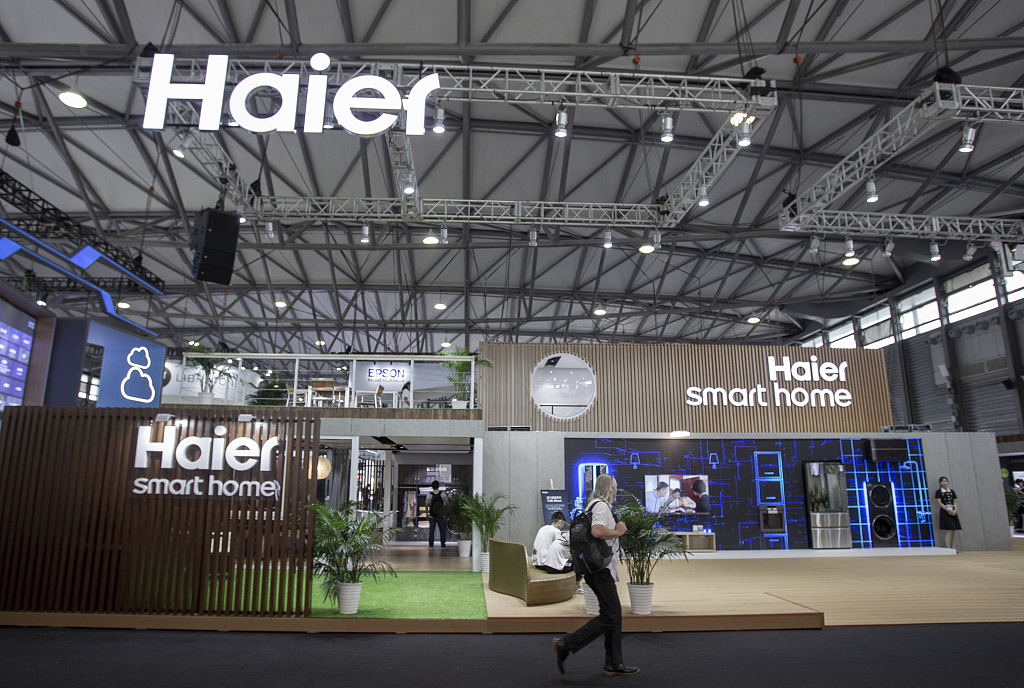
A whole-house smart system at Shanghai International Smart Home Exhibition, September 2, 2020. /VCG
A whole-house smart system at Shanghai International Smart Home Exhibition, September 2, 2020. /VCG
Impacted by the coronavirus, sales of traditional household appliances have all dropped in the first two quarters of this year, while smart home devices like contactless smart gadgets and products with the function of sterilization and disinfection become the black swan in the market.
During the national online shopping festival on June 8, the retail sale of smart home devices tops the second.
Among the devices, sales of smart washers with sterilization functions increased more than 600 percent compared with that of 2019; sales of a smart towel rack with sterilizing and heating functions increased more than five times and smart switch sales increased by 107.8 percent year on year.
Other contactless home appliances like smart sweepers, smart lamps and wireless speakers have also become broadly popular among consumers as they shift their spending priorities from other areas like vacations, travel, and eating out.
"With the development of science and technology, people's demands on the quality of life are increasing, which is driving the rapid development of the home furnishing industry. This year's outbreak of coronavirus confined many people at home, making many of them pay more attention to their living environment. That's the reason behind the boom," said Chen Yongjie, media manager of Xinsheng Electronics, a Shanghai-based company.
He added that sales of household appliances in his company, such as smart kitchen ventilators, smart dishwashers, sweepers and smart toilets, have all increased significantly.

A smart bed dubbed the HiBed comes with a projector, screen, and built-in speakers for those who love to stay home and binge-watch videos. /VCG
A smart bed dubbed the HiBed comes with a projector, screen, and built-in speakers for those who love to stay home and binge-watch videos. /VCG
According to iiMedia Research, China's smart home market has been growing rapidly in recent years. The market reached 153 billion yuan in 2019 and impacted by the coronavirus in 2020, though the growth rate decreased, the market is still resilient. The research estimated that the total shipment of smart home products is about 229 million units in 2020 and the market will reach 170.5 billion yuan this year.
Per another joint research made by 36KR Research Institute and Schneider Electric, during the pandemic, over 76 percent of Chinese residents have considered buying smart home devices, and with 5G, big data and cloud computing, the development of China's smart home products has entered the fast lane after the concept of smart home was firstly known by Chinese about 20 years ago.
In 1997, when Bill Gates's futuristic home was completed, people around the world got to know a tiny slice of how does a high-tech home look like.
At the time, his house was outfitted with fiber optic cables and each room has its own touch pad to control lighting, music, and temperature. Whenever the owner enters the house, the room can recognize him/her, and the house will use their information to try to meet and even anticipate the owner's needs and to adjust the lamps, music system, temperature, humidity and so on as unobtrusively as possible.
Gates' grand compound represented the ultimate smart home at the time and since then, many in China began to produce smart home devices, like smart switches, sockets and even curtains, making the whole smart home industry into wild competition.
Problems quickly emerged after the short boom. Consumers began to question the necessity and function of smart home devices as they can only be used separately and one button can't control all the devices.

Haier Smart Home experience center is seen on 2019 Consumer Electronics Show Asia in Shanghai, China, June 13, 2019. /VCG
Haier Smart Home experience center is seen on 2019 Consumer Electronics Show Asia in Shanghai, China, June 13, 2019. /VCG
After years of development of 5G, big data and cloud computing, technologies such as deep learning and computer vision have become more mature in China. Though individual smart home devices are still dominant in the market currently, the smart home industry has realized that the whole-of-house systems are the future trend and the ultimate home solution for mankind.
"A truly smart home is a systematic project rather than a collection of individual appliances and devices. In the future, smart products of the whole house will be interconnected. Visualization, humanization and scenario-based experience are the trend," said Xia Yu, head of application development department of Zhongwei Semiconductor Equipment (Shanghai) Co. Ltd.
He explained that incompatibility between different brands resulted in the isolation of smart home devices. So far, several major players in the arena like high-tech giants Baidu, Alibaba, Tencent and Huawei, e-commerce giants like Xiaomi, JD.com and traditional household appliance giants Midea, Hisense, GREE and Haier, are competing to build their own smart home ecology or platform as they all try to monopolize the market as much as possible and afraid of being eliminated from the race.
"The major trend in the smart home market is definitely standardization, by which individual products can be connected to each other. To achieve the interconnectivity, all brands need to work together. Openness and integration are the premises," Xia said.
The joint research made by 36KR Research Institute and Schneider Electric pointed out that so far only two percent of consumers have used the whole house smart system and 94 percent of consumers are using individual smart home devices. More than half of them believe the incompatibility between different brands is the major reason that hindered them from buying more smart home products. The following reasons are price, safety and the complexity of operation.